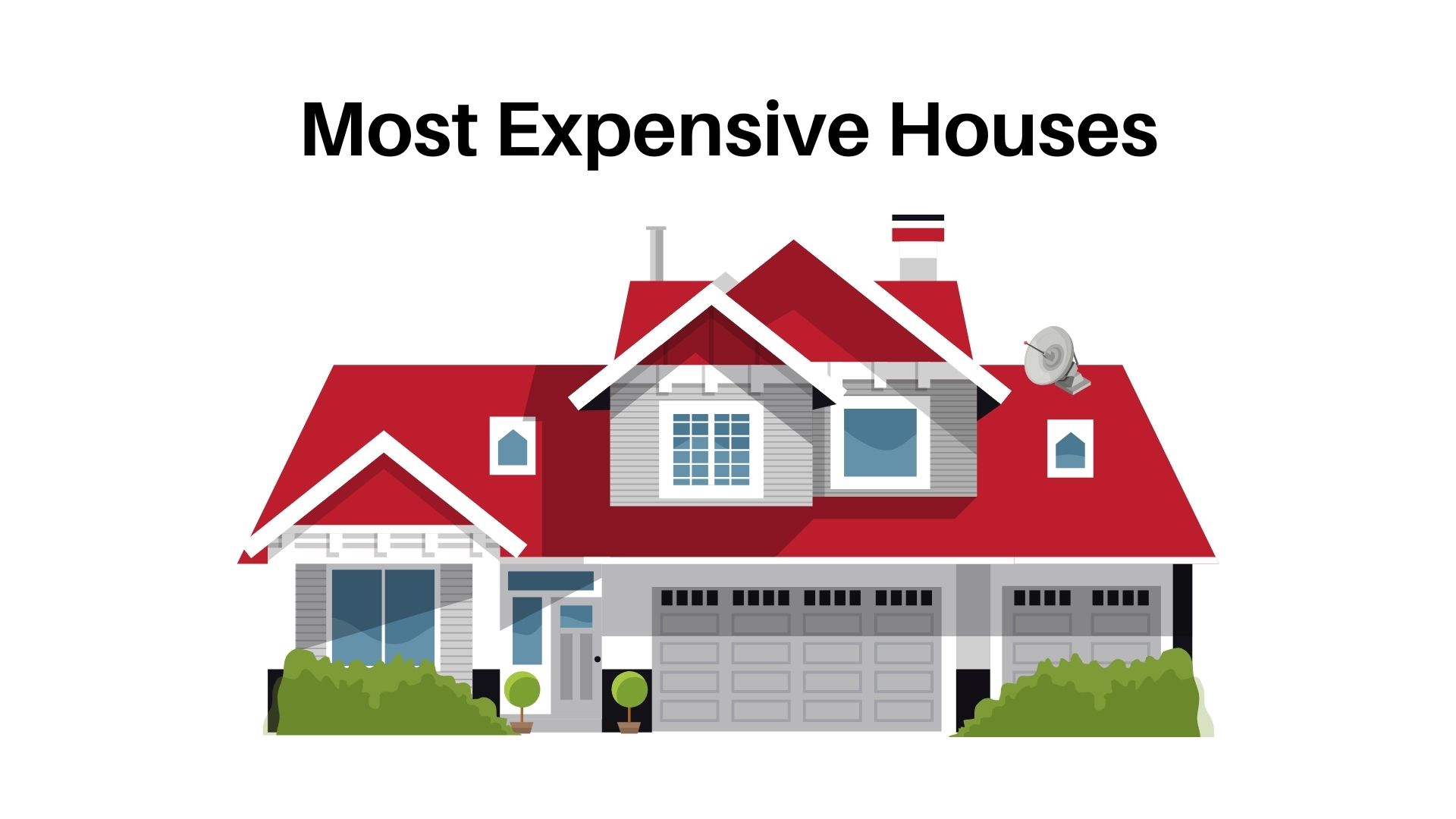Top 10 Most Expensive Futuristic Cities In The World
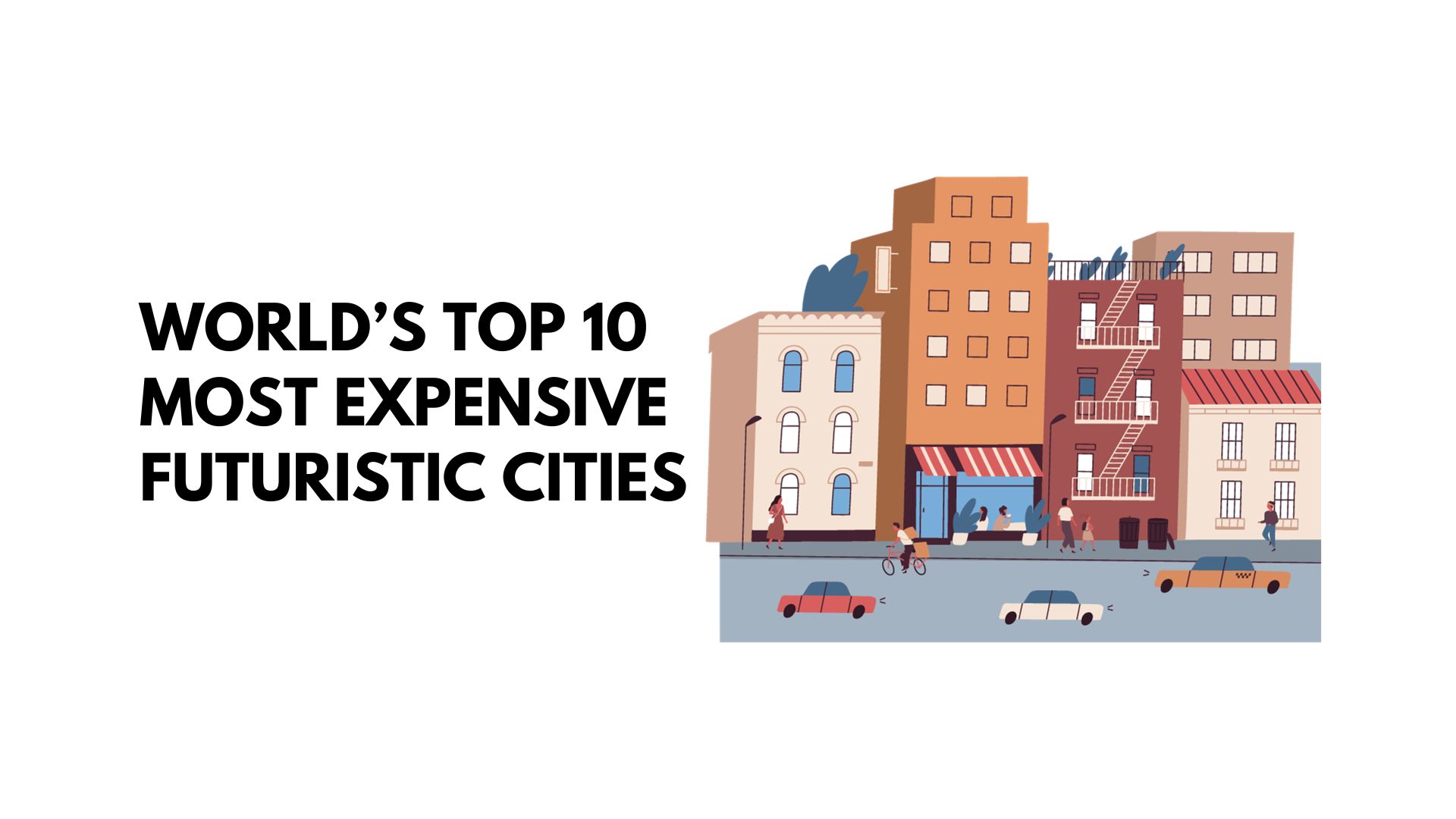
Page Contents
Most Expensive Futuristic Cities – A city is defined as an urban area with high population density, multicultural influence, and high economic activity. They are hubs of social progress; technological progress and innovation. Cities offer diverse opportunities for work; leisure, education and cultural enrichment. However, they also face certain challenges such as road congestion, pollution and social inequalities. As more people live in cities, urban planning and sustainable development are becoming more and more critical. Smart cities with state-of-the-art infrastructure and technology are emerging to address these issues. Cities are crucial in determining the future of our planet and society.
History of Cities
The city has a lengthy history going back thousands of years. The first cities in Mesopotamia date from around 4000 BC. development, including Ur and Uruk. Rivers that provided water for agriculture and transportation were located near the ruins of these ancient cities. Cities grew from agriculture as people gathered in one place to work the land. In ancient Egypt, cities like Memphis and Thebes sprang up along the Nile. They are centres of commerce, politics and religion. Ancient Greece included cities such as Sparta and Athens known for their art, culture and military prowess.
Throughout the Middle Ages, Venice, Paris, and London prospered as bustling commercial hubs. While cities like Oxford and Cambridge boasted prestigious universities, overpopulation and poor sanitation rendered urban areas vulnerable to rampant disease. The Renaissance inspired a shift towards cultural and artistic progress, and Florence flourished as a celebrated centre for art, home to geniuses like Leonardo da Vinci and Michelangelo. The Industrial Revolution brought about the establishment of factories in cities, propelling 19th-century urban growth. Manchester and Birmingham in England, as well as Pittsburgh and Detroit in the United States, were among the cities that emerged as a result of this transformative era.
Cities like New York, Tokyo, and Shanghai are some prime examples of modern-day metropolises that flourished over the past century. Revolutionary developments in technology, transportation, and communication significantly contributed to their rapid growth. These cities evolved into significant centres for finance, culture, and media. Despite these achievements, they had to confront new challenges, such as pollution, crime, and social inequality.
As populations continue to grow worldwide, cities are evolving to keep up with the trend. The migration of more people to urban areas than ever before has prompted cities to adopt innovative technologies and sustainable development solutions to enhance residents' quality of life. With their advanced infrastructure and data-driven decision-making, smart cities are increasingly becoming the preferred option for many.
Significance And Popularity of Cities
The symbolic significance of cities across the world is influenced by their unique histories, cultures, and economic standing. Factors such as geographic location, cultural diversity, and economic growth often contribute to a city's recognition and popularity. As global travel and tourism continue to grow; cities will evolve and adjust to cater to the needs of both locals and visitors.
- New York City holds a significant place among global cities, being a hub of culture and finance. It houses world-renowned establishments such as the United Nations and Wall Street, as well as popular landmarks like Central Park and the Statue of Liberty.
- Known for its amorous atmosphere, the “City of Lights” or Paris is home to world-renowned establishments like the Louvre and iconic landmarks like the Eiffel Tower. It is also a hub for culinary delights, fashion, and art.
- As the capital of China; Beijing holds significant cultural significance. It boasts several world-renowned landmarks such as the Great Wall of China, the Forbidden City, and the Temple of Heaven. Besides its cultural heritage, Beijing is also an epicentre of technology and innovation with several multinational corporations choosing to house their headquarters there.
- As the capital of Italy, Rome ranks among the world's most prominent historical cities. Famed for its association with the Roman Empire, the Colosseum and Pantheon are two of its most celebrated sites. Moreover, Rome's significance in art and culture is underscored by its rich array of museums and galleries.
- London, the distinguished capital of the nation, stands out as one of the globe's most lively and diverse cities. Its architectural landmarks include the likes of Buckingham Palace, the British Museum, and the universities of Oxford and Cambridge. It serves as a thriving hub for businesses in finance, fashion, and media.
- Mumbai, the economic hub of India, is globally recognized for its rapid population expansion. The bustling city serves as a nucleus for business, industry and entertainment, with the illustrious Bollywood film industry headquartered there. In addition, Mumbai is celebrated for its varied culture and vibrant street food scene.
- Recognized as an international destination, Rio de Janeiro is celebrated for its sandy beaches, lively samba music, and vibrant Carnival festivities. As a hub of industry, it has attracted numerous major corporations which have set up offices there. Sugarloaf Mountain and the iconic Christ the Redeemer statue are among the popular landmarks that grace the city's skyline.
- Dubai, located in the United Arab Emirates; has become a popular destination for both business and luxury travel, thanks to its rapid development as a metropolis. It is widely recognized for its splendid architecture, high-end shopping malls, and artificial islands.
- A Southeast Asian city-state, Singapore is a thriving destination for tourists and business professionals alike. Renowned for its architectural landmarks like Marina Bay Sands and Gardens by the Bay; Singapore has cemented its position as a hub of finance, technology, and innovation.
- Los Angeles is a city renowned for its entertainment industry, making it a popular tourist destination for aspiring artists and enthusiasts alike. It is home to Hollywood, the epicentre of film and television production, and boasts iconic attractions such as the Hollywood Sign and the Santa Monica Pier.
- Australia's largest and capital city; Sydney, is a popular tourist destination for its sandy shores, coastal vibes, and impressive architecture like the Sydney Opera House and Harbour Bridge.
Economical Reference
The significance of cities in the global economy cannot be overstated, as they foster innovation, commerce, and economic growth. Here are some of the notable ways that cities impact the economy:
- Metropolises play a crucial role in expanding the workforce by offering countless employment opportunities across various industries. This is particularly evident in sectors with significant urban footprints, such as banking; technology, and healthcare.
- Urban areas serve as hotbeds of creativity and progress, as they are home to numerous universities, research centres, and entrepreneurial communities. These factors combine to generate novel ideas and products that drive innovation. Consequently, this ingenuity may foster the growth of nascent industries and bolster those that are already established.
- Urban areas serve as crucial hubs for commerce and industry, facilitating access to local and global markets. This is particularly evident in port cities, which manage a substantial share of international trade.
- Metropolitan areas are known for their high productivity levels; which surpass those of rural regions. This is mainly due to the concentration of skilled workforce and businesses, as well as easy access to advanced infrastructure and services.
- The tax revenue generated by cities is a significant source of funding for local and federal governments to finance essential public services such as healthcare, education, and transportation.
While some cities benefit from economic advantages, others are burdened with issues of poverty and inequality. High costs of living in various metropolitan areas make it difficult for residents with limited incomes to access city amenities. Crime; pollution, and congestion are just a few of the problems that plague many urban areas; leading to a reduced quality of life and limited economic progress.
To combat such concerns; several cities have initiated measures to foster inclusive and sustainable economic progress. These include grants for small businesses, strategies to promote impartiality in social and economic spheres, as well as funding for eco-friendly housing; public transit, and infrastructure.
Why Cities Are Expensive and What is the Reason For Its Growing Demand in Future?
Urban centres around the globe can be quite expensive for several reasons. These include limited availability of real estate, robust demand for housing, the proximity to vital cultural and commercial hubs, and elevated living costs. Below are some factors often responsible for the high living expenses in cities:
- Cities have always been popular due to their abundant job opportunities, rich cultural offerings, and diverse entertainment options. However, this popularity has led to significant demand for housing in urban areas, which sometimes exceeds the available supply. This, in turn, causes real estate prices and rent to skyrocket.
- Cities often face spatial limitations, which curtail their ability to expand their infrastructure. This dearth of space for new construction of buildings and homes gives rise to high land costs and a limited supply of new residences. Consequently, prices may rise in response to these supply-demand imbalances.
- Cities often have a higher cost of living in comparison to rural and suburban areas due to the increased expenses for food, transportation, and other goods and services. This is often a result of the higher operating costs for companies in urban areas, which are then shifted to consumers.
- In numerous urban areas, significant business and cultural centres including banking districts, museums; and retail districts are often in close proximity to each other. However, due to the high cost of real estate and amenities; residing in or near these areas may come at a premium price.
- As urban populations grow, cities have to make significant investments in infrastructure to keep pace. Public transit systems and utility networks are among the essential expenditures that have to be made. In some cases, residents may have to bear some of the costs associated with these expenses.
- As we look to the future, it's expected that cities worldwide will continue to grow significantly. With a projected 10 billion people residing on Earth by 2050, resources such as housing, transportation, and energy, which are already in short supply, will come under even greater strain due to population expansion.
- As urban areas experience a scarcity of space, competition for housing and real estate is expected to intensify, resulting in price hikes. This will be particularly challenging for locales hemmed in by natural barriers or situated along coastlines, where expansion opportunities are scarce.
- As cities expand, so do the costs of maintaining their infrastructure. With a growing population comes the need for more utilities, public transit, and essential services. These investments, however, can be costly, and their expenses are often passed on to the local community in the form of higher taxes and fees.
- The looming spectre of climate change portends dire consequences for urban areas in the coming years. Cities are expected to bear the brunt of rising sea levels, extreme weather events, and increased flooding. As a result; the cost of living in cities could rise as authorities attempt to address and mitigate these challenges.
- Cities are becoming more integrated and global as international trade and investment continue to increase. Cities are likely to see an increase in the cost of living along with; new jobs and economic growth; as they become more attractive to foreign investors and residents.
Top 10 Most Expensive Futuristic Cities In The World
- Tokyo (Japan)
- Singapore (Singapore)
- Tallinn (Estonia)
- Helsinki (Finland)
- Bangalore (India)
- Shanghai (China)
- Seoul (South Korea)
- San Francisco (USA)
- London (UK)
- Hong Kong (Hong Kong)
#1. Tokyo (Japan)
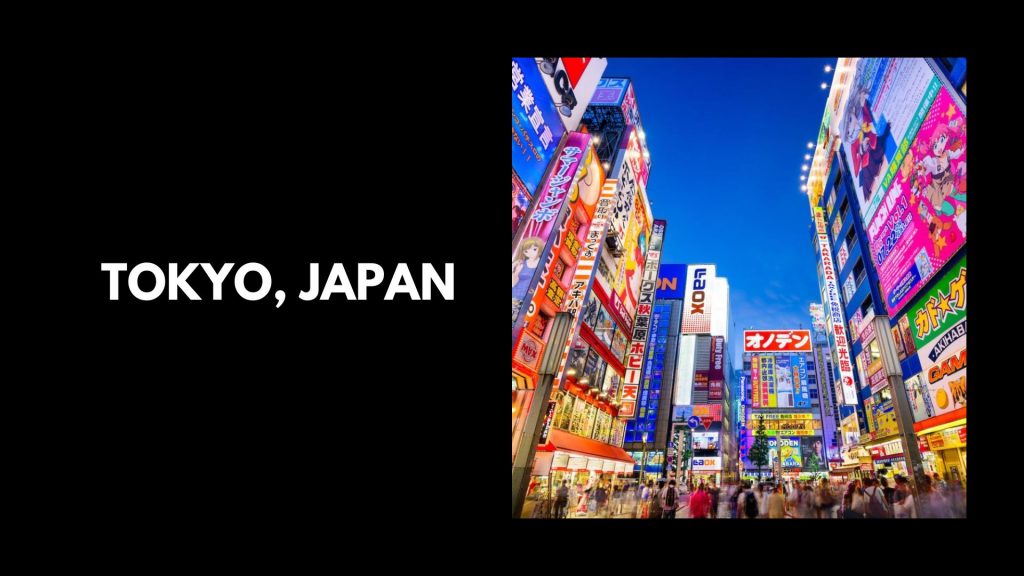
The backdrop of one of the latest cities around the globe is set by the rising of buildings, neon-lit signs contemporary architecture, and bustling streets that are brimming with the latest technology.
Tokyo is known as among the top technologically advanced cities around the globe and is a major player in the realm of robots, smartphones, and automobiles. With the help of the rapidly growing startup scene filled with young, bright individuals with big concepts, the city is keeping pace with the latest technological advancements.
A Japanese-based company has created a ring that, when connected to Bluetooth on the smartphone, can make electronic payments by the movement of the hand. Dating salons are also available in Tokyo to connect people who like startup companies. A stroll through Tokyo will bring you face-to-face with robots, the largest structure in the world and other surprises.
#2. Singapore (Singapore)
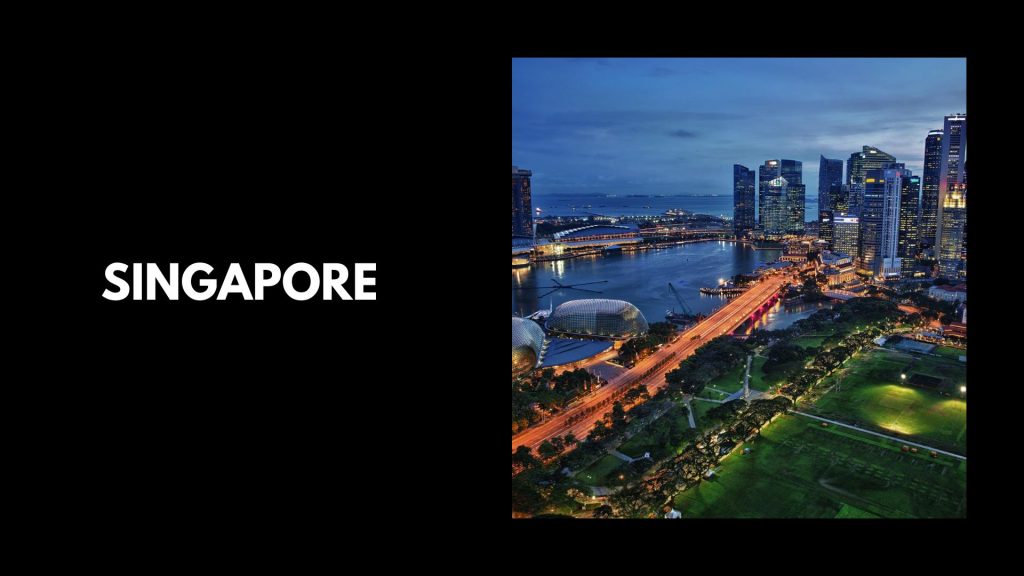
Singapore; is a city-state that has risen to the status of a leading contemporary Asian city. In 1965 Singapore; a former state of Malaysia; as well as the British and the Japanese; eventually gained independence. Singapore was one of the wealthiest nations under the guidance of Singapore's first premier; Lee Kuan Yew; who was the leader for over 30 years.
Singapore is awe-inspiring; dotted with glass-clad towers and the latest construction; such as the stunning SkyPark hotel; which is part of Singapore's massive resort scene. Lee Kuan Yew; provided city planners with directions on how to allow for a variety of parks as well as; eco-friendly green areas throughout the entire island.
Apart from having one of the lowest corrupt governments; it also has one is one of the business-friendly nations and a world-class education program; a strict law to combat criminality and a flourishing art scene; Singapore is known as the “Lion City” (literally; city of the lion in Malay).
#3. Tallinn (Estonia)
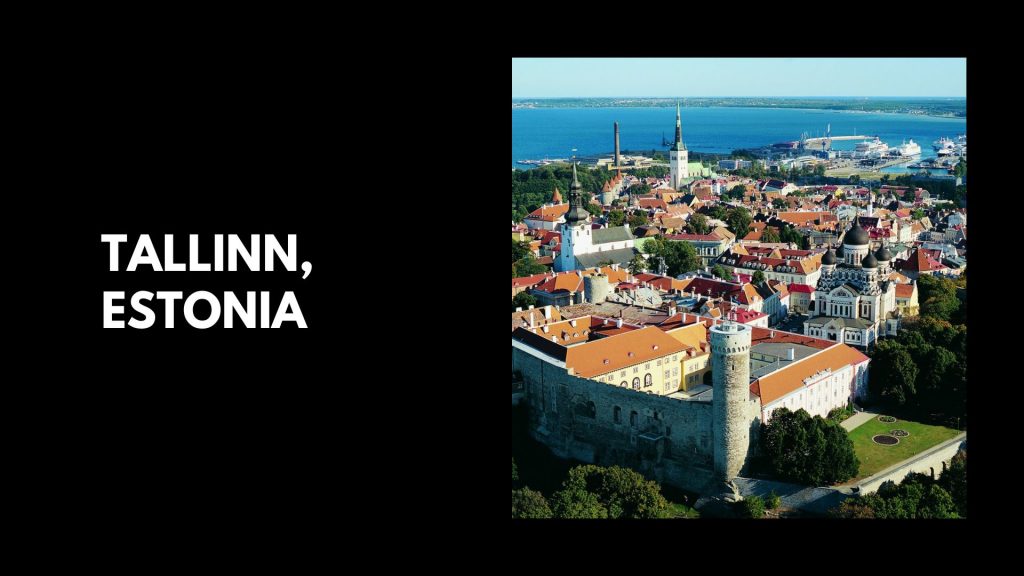
Although it only gained independence from Russia at the age of 1991 Estonia swiftly made up for the lost time; even though it had not seen the start of technological progress.
Estonia was able to invest heavily in technological advancement. Tallinn, the capital of Estonia might not be as awe-inspiring as Silicon Valley in California, but it is home to a vibrant startup community that can rival it. It is true that Bolt; as well as Skype both; started in the city.
The Estonian government created an internet connection for free in the cities with the most people in 2002. In 2007 electronic voting became a common practice. While the US and the UK have been slow to adopt 4G and 3G; Estonia set up an ultra-high-speed connection to the internet in 2012.
#4. Helsinki (Finland)
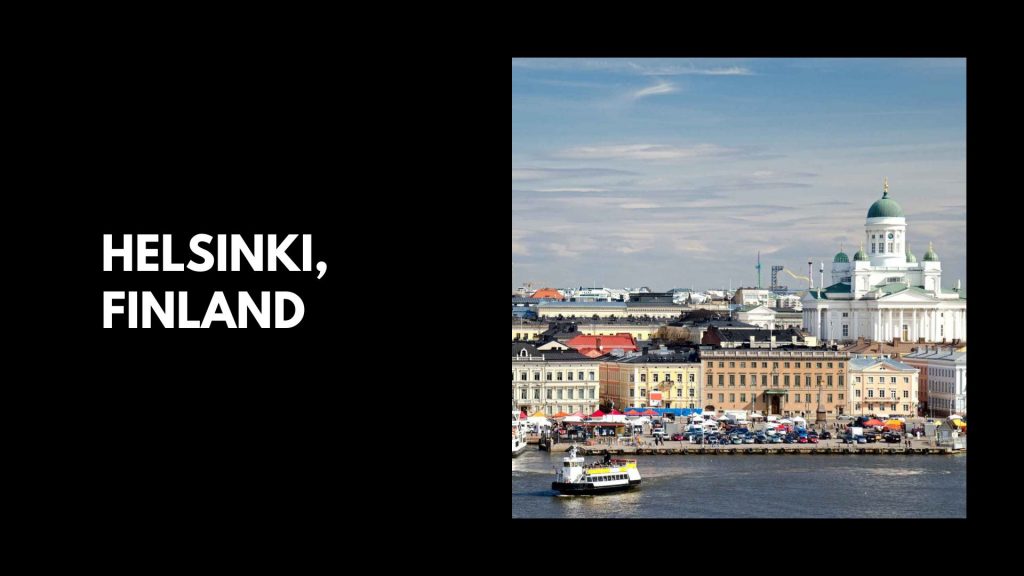
With its contemporary Scandinavian design; social advancement and technological breakthroughs; Helsinki has made efforts towards becoming a modern city. In Helsinki the largest city in Finland There are plenty of free Wi-Fi hotspots that are scattered across the city, so getting online is not a problem. In terms of providing large paternity and maternity leaves and officially recognizing civil unions as they did in 2002, Finland was historically decades ahead of the other countries.
Its position as a place where Helsinki has eight universities as well as a number of other educational institutions shows the importance the country attaches to education. Helsinki's skyline is led by a renowned neoclassical cathedral; however; Helsinki's design district has a number of modern and contemporary and sleek buildings.
#5. Bangalore (India)
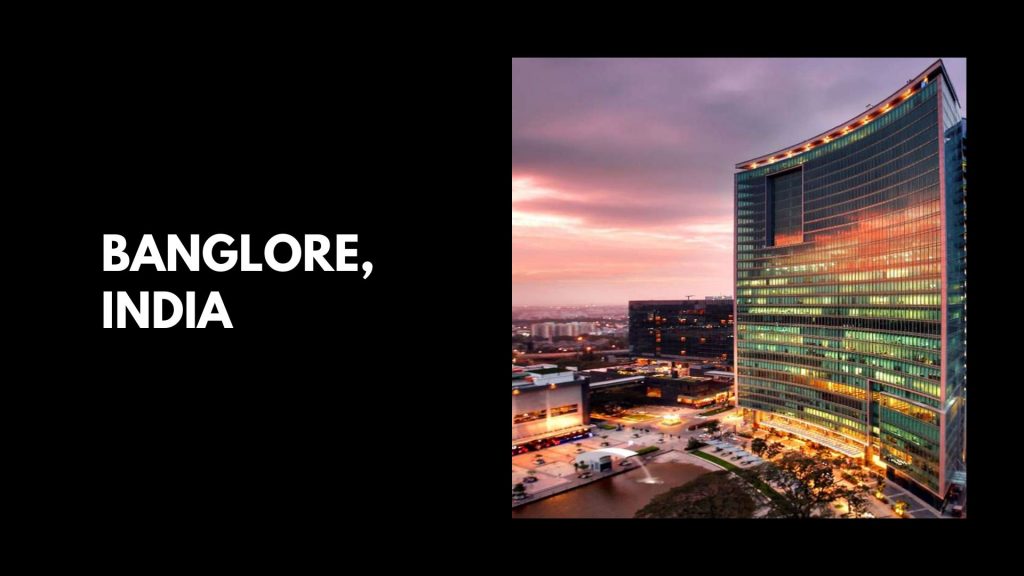
Due to its inhabitants' creativity, Bangalore, also known as Bengaluru has seen a tremendous expansion in the IT sector. Due to the quality of work produced by cheaper labour, Western countries started outsourcing companies like Dell as well as LinkedIn to Bangalore which helped provide millions of jobs to Indian engineers.
The famous Bagmane Tech Park in Bangalore is a complex of factories, workplaces as well as research facilities, is now more than an outsourcing centre. Since the local talent is beginning to come up with their own concepts and have become entrepreneurs themselves The number of local companies is growing. Over half of India's leading biotech industry is being made in Bangalore.
#6. Shanghai (China)
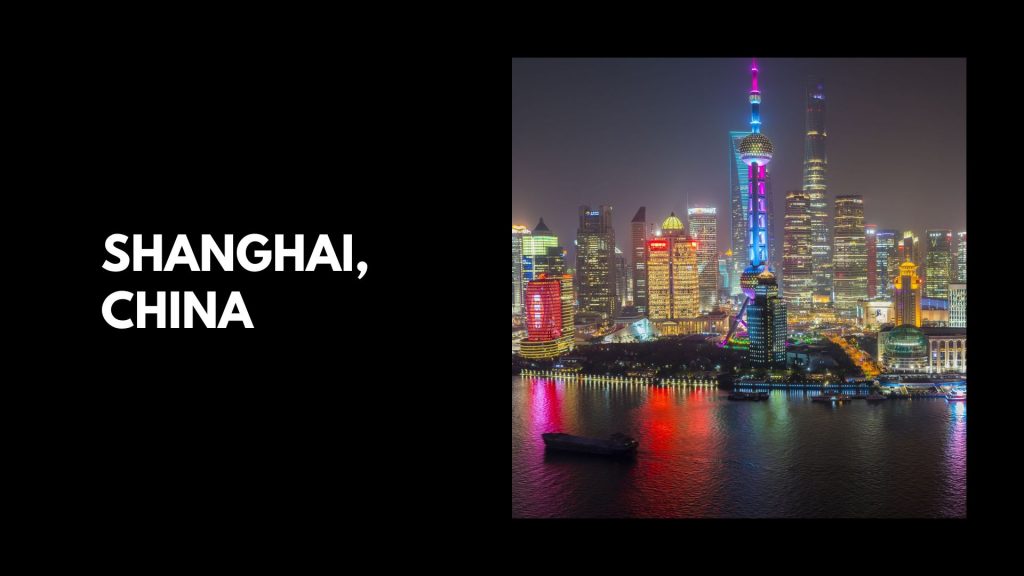
Shanghai; the largest city in China; boasts a population of over 14 million; making it one of the most populous metropolitan regions globally. The city has undergone significant changes to accommodate its inhabitants; transforming into a major economic hub that can rival the best in the world.
Over the last few decades; Shanghai has established itself as a substantial financial centre, with the Pudong Economic Zone attracting foreign investors and driving economic growth. The city's skyline is now dotted with modern skyscrapers; their glass structures gleaming in the daylight and their bright lights a sight to behold at night.
#7. Seoul (South Korea)
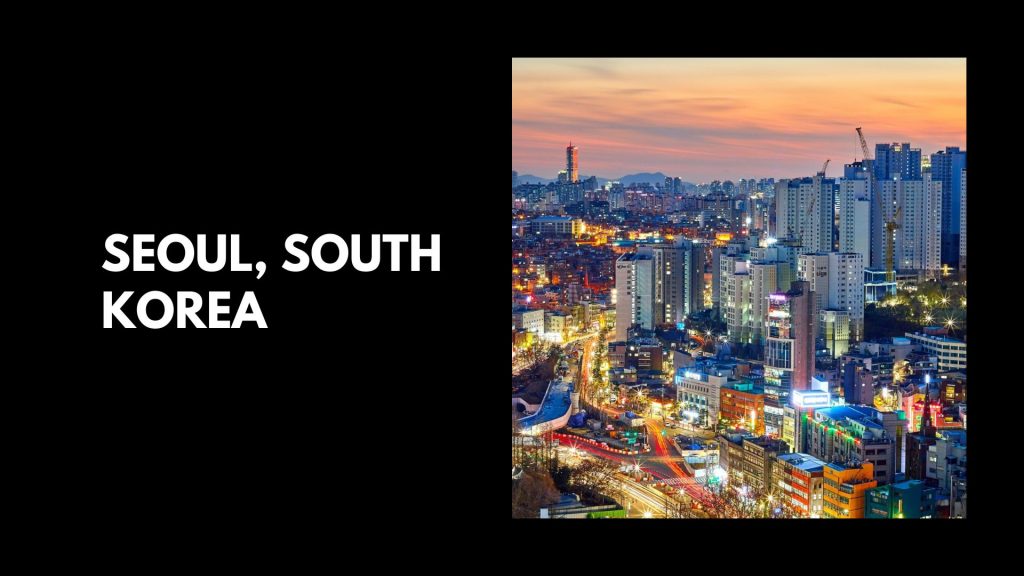
Once ravaged by the Korean War; Seoul has since transformed into a prosperous and highly developed city. Following the war; an influx of rural inhabitants flocked to the city, leading to the swift and unsightly construction of buildings. However; urban planners have partnered with affluent and influential members of the community to revamp Seoul; which was designated the World Design Capital in 2010.
Today, 20% of South Korea's population resides in the city, which boasts a thriving artistic scene, world-renowned museums, and aesthetically pleasing architecture. Seoul is also renowned for its lively nightlife, with a range of 24-hour establishments catering to hard-working employees in need of relaxation.
#8. San Francisco (USA)
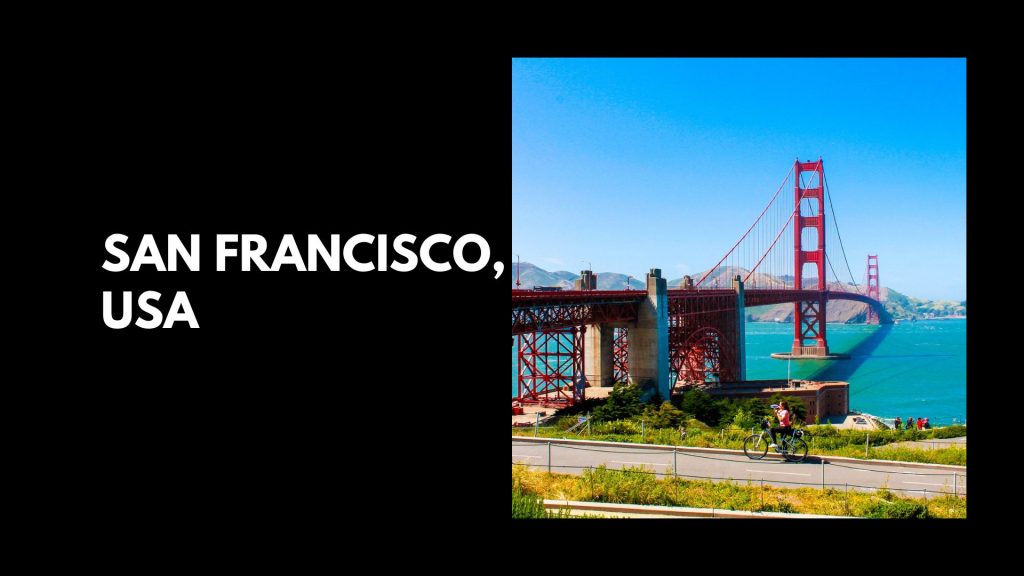
Renowned for its technical innovation and social progressiveness; San Francisco is a thriving hub of the IT sector. The southern San Francisco Bay Area is home to Silicon Valley; a cutting-edge neighbourhood that houses a multitude of digital businesses; from tech giants like Apple; Facebook; Google; and Twitter to a diverse range of startups.
Additionally; the city boasts other prestigious technological institutes, such as NASA's Ames Research Institute. The population is predominantly made up of young adults in their 20s and 30s who are online and prolific creators.
#9. London (UK)
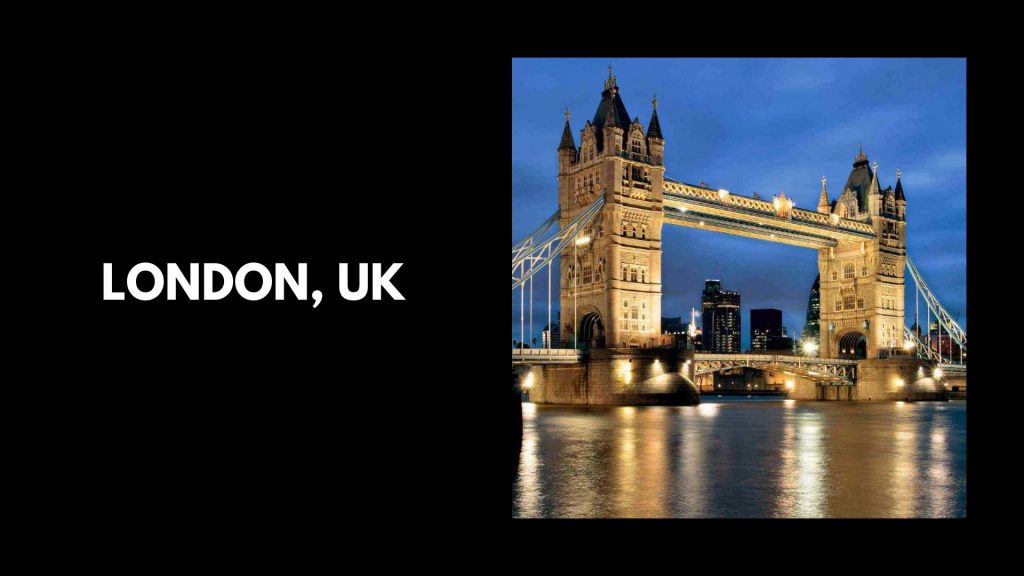
London's significance in the modern world is no secret, but recent developments have further cemented its position as a hub of innovation. Despite the decline of its empire; London rebounded and emerged as a major economic centre. The city's skyline boasts iconic structures; both old and new; with the addition of towering skyscrapers that blend seamlessly with the historic district.
A dense network of trains facilitates transportation for the city's inhabitants. According to Mercer's quality of living research in 2012; London residents enjoy the highest standard of living in the UK, while its infrastructure ranks sixth in terms of power; water; communication services, and public transportation availability.
#10. Hong Kong (Hong Kong)
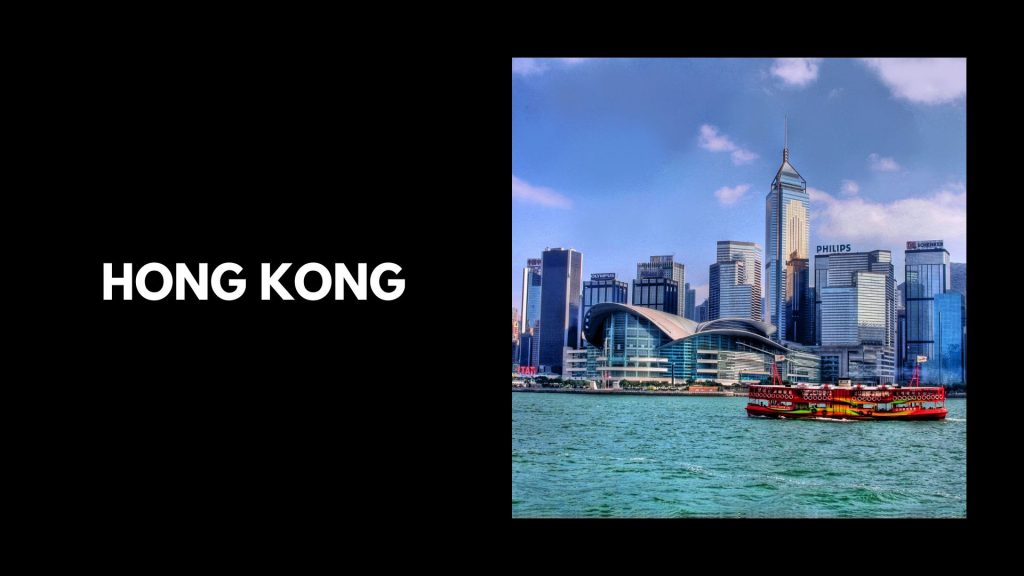
Renowned for its striking skyline, Hong Kong, one of the most densely populated cities globally, has thrived as an autonomous region of China. Though it boasts an impressive financial industry and modern architecture, the city manages to balance it out with preserved country parks, serene beaches, and mountain trails just beyond its limits.
Hong Kong's public transit, including trains, buses, trams, and ferries, is among the most comprehensive in the world and covers a significant percentage of the population. While air pollution remains a major challenge, the city's inhabitants still enjoy impressive life expectancies.
Final Words
To summarize, cities have played a significant role in human history and continue to be essential for innovation, culture, and economic growth. They attract global visitors by offering diverse opportunities, ranging from work and education to entertainment.
Cities grapple with complex issues such as inequality, affordability, and sustainability, only exacerbated by the steady rise in global population and urbanization. It's crucial to devise innovative solutions that promote economic growth while ensuring every citizen enjoys a good standard of living. Despite these challenges, cities remain some of the most captivating and dynamic places in the world, offering abundant opportunities for exploration, learning, and personal growth.
Whether you're a lifelong resident or a first-time visitor, there's always something novel to discover in the expansive and thrilling world of cities.
FAQ.
Cities of tomorrow may feature airborne vehicles, expansive bridges, interconnected streets, and underground spaces. Advancements in big data, the Internet of Things, and artificial intelligence will be the driving force behind these futuristic cities. These innovations will enable cities to coexist symbiotically with people, influencing their lifestyle, health, and cognitive faculties.
The forthcoming smart cities will not only incorporate technology but also highlight the significance of space flexibility. The integration of space, technology, function, and flexibility will define smart cities. The ability to adapt will be the most valuable commodity within these cities.
Smart cities harness the power of information and communication technology (ICT) to enhance their operational efficiency, communicate effectively with the public, and elevate the standard of public services and overall citizen welfare.
The smart city's secure and cheerful aura entices more skilled individuals, ultimately boosting the city's GDP and the overall economy. A sustainable environment, with minimal emissions and cleaner streets, enhance living standards, fosters happiness, and propels economic growth.

Aditi is an Industry Analyst at Enterprise Apps Today and specializes in statistical analysis, survey research and content writing services. She currently writes articles related to the "most expensive" category.

